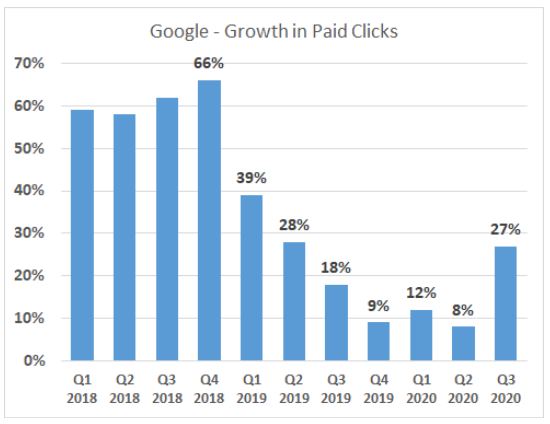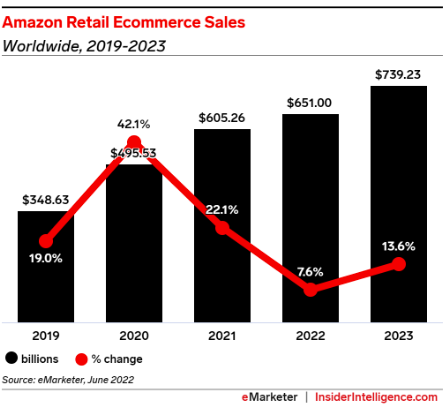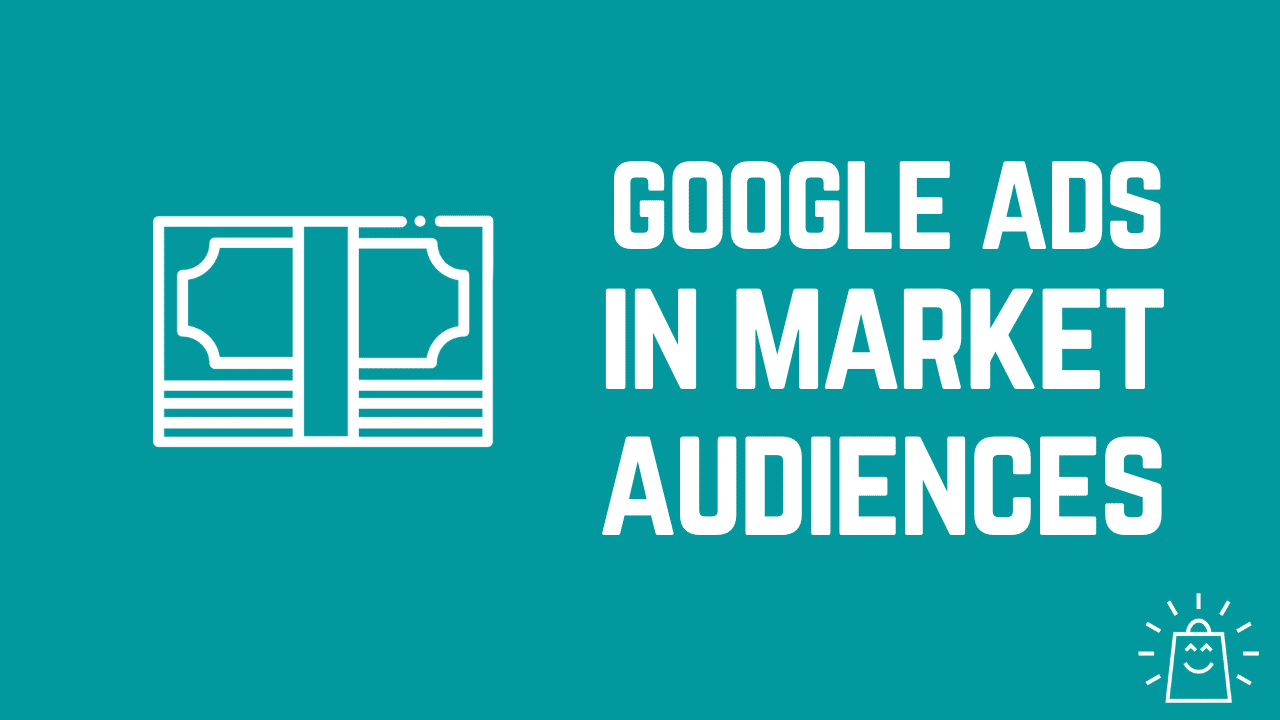
What if you could target users who are not only searching for the products you sell but are also at the later stages in the buying funnel?
This is what makes in-market audiences so great. The in-market audience segment in Google Ads gives your campaigns access to these users, and if you use it strategically, your ads will show in front of “hot” leads.
In this piece, we’ll cover in-market audiences in Google Ads and how to set them up, along with practical tips on how to target them with your campaigns.
Let’s dive straight into it.
What Are In-Market Audiences in Google Ads?
In-market audiences are made up of Google users with “high commercial intent.” These users are bundled together based on their recent search history as they’re actively researching and planning to buy a specific product.
How does Google determine this? Well, if you correlate inputs on search terms, website visits, and accessed content, you will get a group of users that are interested in a particular market.
It all comes down to analyzing in-market behavior and purchase intent. Signals like comparing different products within the same category or researching offers from competing brands point to purchasing intent.
In technical terms, Google tracks clicks on ads, conversion rates from those clicks, frequency of sessions, the content (specific pages) visited during these sessions and similar metrics for unique users across the Google Display Network.
In-market audience segments are a result of processing all this data.
In-Market Segments And Campaign Types
In-market audiences are available for all campaign types.
When they first came out they were available only for Search and Display campaigns, but now you can use them in Video and Shopping campaigns as well.
Note that with Performance Max, you’re not able to target audiences but you include in-market audiences as audience signals.
Benefits of In-Market Audiences
- Targeting in-market audiences is likely to increase traffic to your website. Just don’t expect this to automatically translate into conversions. The pitfall of In-Market audiences is that CPC and CPM go up, but you might not see the desired returns from the campaign.
- You augment keyword targeting. Google taps into “demonstrated in-market behavior” to select the users who will see your ad. When you solely rely on keyword-based targeting, you miss out on some searches that are highly relevant, but a bit too generic to come from a user without their “in-market” history.
What In-Market Audiences Are Available in Google Ads?
You have access to the following 25 in-market audiences:
- Apparel & Accessories
- Arts & Crafts Supplies
- Autos & Vehicles
- Baby & Children’s Products
- Beauty & Personal Care
- Business & Industrial Products
- Business Services
- Computers & Peripherals
- Consumer Electronics
- Dating Services
- Education
- Employment
- Event Tickets
- Financial Services
- Food
- Gifts & Occasions
- Home & Garden
- Media & Entertainment
- Musical Instruments & Accessories
- Real Estate
- Seasonal Shopping
- Software
- Sports & Fitness
- Telecom
- Travel
These are generic categories, each with sub-categories of in-market segments.
For example, the employment category offers sub-categories for Agriculture jobs, Construction jobs, Transportation & Utilities jobs, and many others.
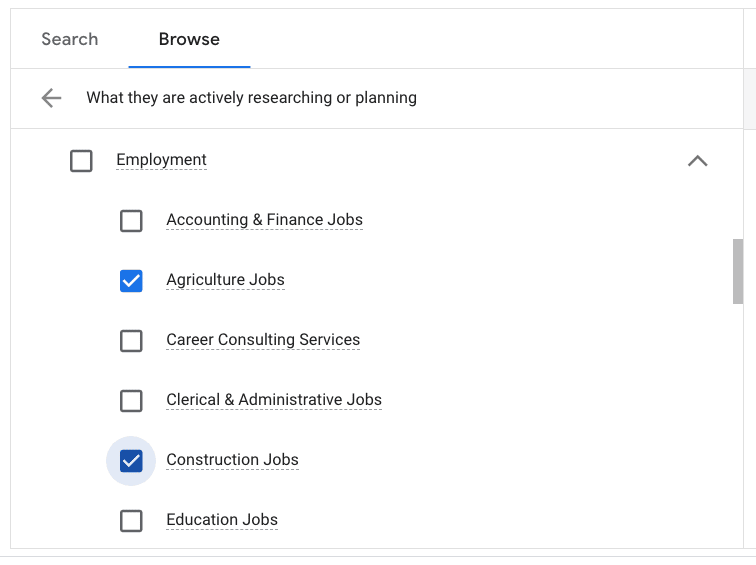

How to Add In-Market Audience Segments to a Campaign
The steps for adding in-market audience targeting to existing campaigns are simple and straightforward.
We’ve covered some of the basic info about Google Ads audiences in another piece, so here we will dive straight into it.
Log into your account and select a specific campaign.
Next, open the Audiences menu and click “Edit Audience Segments”.
Then, a menu will open up where you can browse the various available audience segments.
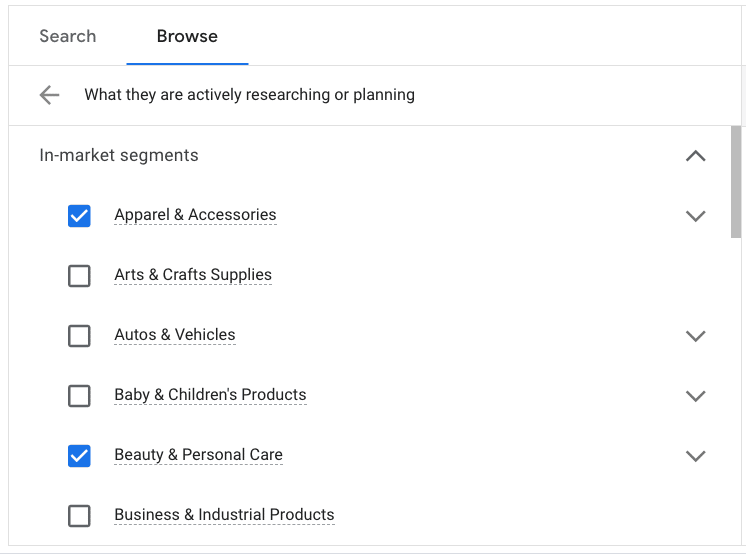

The segment you are looking for is labeled as “What they are actively researching or planning (In-Market)”
Here you can select one or more segments from the list. Your choices will, of course, depend on your brand and customer base.
When you’ve already got other campaigns running with Audiences, Google will show some “ideas” and suggestions in the “Search” tab:
- what your competitors use in their campaigns,
- general benchmarks for your type of business, or
- ad campaigns that are similar to yours.
There is a cool hack you can do to get useful suggestions. Simply drop an URL into the search bar and you’ll get a list of segments (mostly In-Market segments).
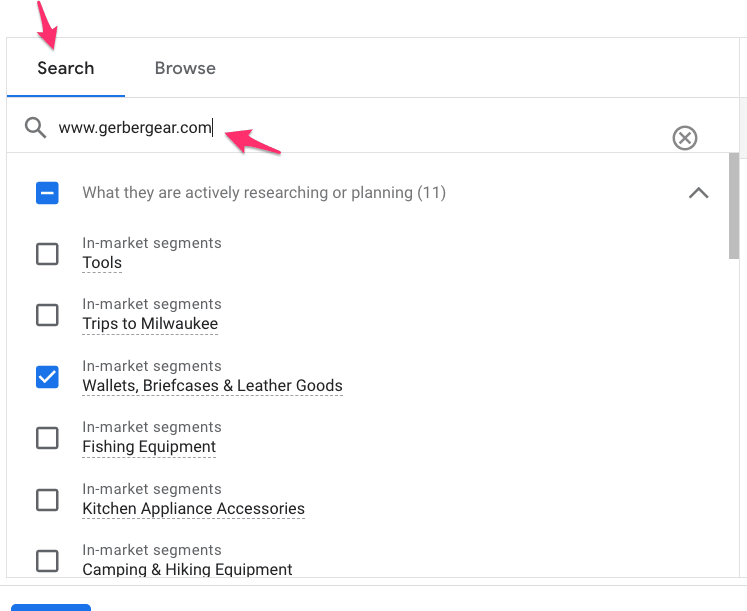

Check out the example in the screenshot above: if we add the URL www.gerbergear.com into the search box, we get these suggestions:
- Tools,
- Trips to Milwaukee,
- Wallets, Briefcases & Leather Goods,
- Camping & Hiking Equipment,
- Fishing Equipment,
- Winter Sports Equipment & Accessories,
- Apparel & Accessories,
- Luggage,
- Kitchen Appliance Accessories,
- Water Activities Equipment & Accessories
This is one way to discover new audience segments (ones who maybe didn’t pop up during your research).
Now you know your way around these reports, let’s see how these segments can be used.
How To Use In-Market Audiences
Let’s take a look at how to leverage in-market audiences in your campaigns.
Start Out On Observation Mode
It’s recommended to start with in-market audiences in observation mode. This allows you to reach as many people as possible while you figure out the campaign’s effect. If the metrics are favorable, you can make some bid adjustments to hone in on the audience segment that converts.
Affinity vs. In-Market Audiences
Detailed demographics, affinity, and in-market audiences are cold audiences, as opposed to remarketing lists where users already know your brand.
Since demographics and affinity audiences seem too generic, in-market audiences are better than these two segments when it comes to driving conversions since you’re targeting users who are interested in your market and ready to buy.
Custom Intent Audiences
Custom intent audiences used to be a very popular way of targeting users in ad campaigns, especially for targeting your competitors’ customers. Now the custom audience segments option replaces both custom affinity segments and custom intent segments.
Let’s take a quick look at how it used to work, as it might inspire you to change your approach to in-market audiences.
In essence, you were able to target users who visit your competitor’s site. You could define the custom intent audience by URL and in-market keywords and this enabled you to reach these visitors with targeted Display ads, even though they were not “your” visitors.
Optimize In-Market Audiences for Success
In-market audiences are created through Google’s unique insight into users’ search history and purchasing intent signals. Segment members can be defined by 25 general categories, and a whole host of subcategories, so you should be able to find the users who are, quite literally, in your market.
As with other Google Ads audiences, success isn’t guaranteed so you’ll need to add the audience segments and look at their performance.
On a good day, in-market audiences can help you steal customers from your competitors. On a bad one, you are at least sure that your ads are shown to people who actively research the type of products you sell.



